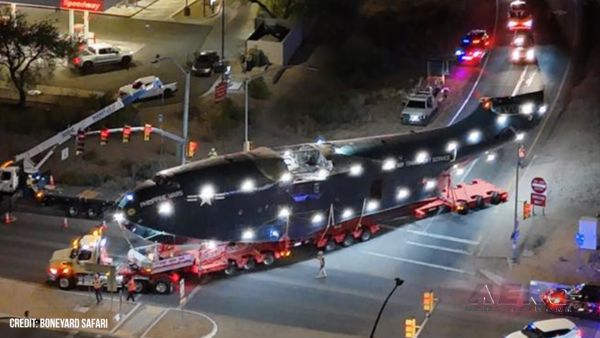Wed, Jan 08, 2014
Be Cautious When Cranking Up The Mill In Very Cold Conditions
As the nation shivers in the grips of what has been called a Polar Vortex, it might be advantageous to review Lycoming's 2002 cold-weather starting bulletin before you clear the snow from the hangar door and drag your bird out onto the tarmac.

According to the document, in extremely low temperatures, oil congeals, battery capacity is lowered, and the starter can be overworked. Improper cold weather starting can result in abnormal engine wear, reduced performance, shortened time between overhauls, or failure for the engine to operate properly.
The use of pre-heat will facilitate starting during cold weather, and is required when the engine has been allowed to drop to temperatures below +10°F/-12°C (+20°F/-6°C for –76 series engine models). Be sure that the engine oil is in compliance with the recommended grades. However, the use of a heated dipstick is not approved because heat is not distributed throughout the engine, and concentrated heat may damage non-metal engine parts. Proper pre-heat requires a thorough decongealing of all oil.
Lycoming says to pre-heat using hot air:
- Use a high- volume hot air heater. But note that the hot air should be directed carefully to avoid heat damage to non-metal parts. Open cowl flaps if installed, so that heat build-up does not damage wiring, hoses, etc.
- Apply hot air directly to the oil sump, external oil lines, cylinders, air intake, oil cooler and oil filter in 5 to 10 minute intervals. Between intervals, feel the engine to be sure that it is retaining warmth. Also check to be sure that there is no damaging heat build-up. During the last 5 minutes, direct heat to the top of the engine.
- Immediately after pre-heating, start the engine according to the normal starting process. Avoid cranking for more than 5 seconds each start attempt. Due to the battery being cold and subject to rapid discharge, an auxiliary power source is recommended.
- Avoid rapid acceleration after a cold start. Do not exceed idle RPM, recommended in the engine Operator’s Manual, until oil pressure is stabilized above the minimum idling range. Allow up to one minute for oil pressure to stabilize, since lines to the gage may remain cold. If oil pressure is not indicated within 30 seconds, shut down the engine and determine the cause. If no leaks or damage is found, repeat the pre- heat before restarting.
- Allow the engine to warm up at idle speed until oil pressure and temperature are stabilized within normal limits and proceed to ground check in accordance with the airframe manufacturer’s Pilots Operating Handbook.
- Cycle the propeller control in accordance with the airframe and propeller manufacturer’s instructions to insure warm oil is circulated into the propeller dome.
- After completing the ground check, and before attempting takeoff, check oil pressure, oil temperature, and cylinder head temperature to be sure that all are well within their normal operating ranges.
- Insure that when takeoff power is applied smoothly, oil pressure, fuel flow, manifold pressure, and RPM are steady. Surges or fluctuations may indicate that the engine is not warm enough for takeoff.
Lycoming says the engine may not be warm enough for takeoff if there are indications of:
- Engine roughness
- Low, high or surging rpm
- High, low, or fluctuating oil pressure
- High or low fuel flow
Excessive manifold pressure
And be sure to enjoy the scenery once you're airborne.
More News
Aero Linx: International Federation of Air Traffic Controllers' Associations (IFATCA) IFATCA is the recognised international organisation representing air traffic controller associ>[...]
“The BlackBird is more than a demonstrator—it’s a flying testbed for the future of aviation. To see it take flight in such a short time is a testament to our team>[...]
Glideslope Intercept Altitude The published minimum altitude to intercept the glideslope in the intermediate segment of an instrument approach. Government charts use the lightning >[...]
Also: MQ-9B UAS MTC, FlightSimExpo, New JPL Director, Japanese Lunar Lander Preps Merlin’s flight testing campaign continues to rapidly progress with its certification-ready >[...]
From 2017 (YouTube Edition): The Airplane From Down Under Is A Proven Trainer… Jabiru was one of the early light sport aircraft (LSA) brought into the U.S.A. when the sport >[...]
 ANN's Daily Aero-Linx (05.16.25)
ANN's Daily Aero-Linx (05.16.25) Aero-News: Quote of the Day (05.16.25)
Aero-News: Quote of the Day (05.16.25) ANN's Daily Aero-Term (05.16.25): Glideslope Intercept Altitude
ANN's Daily Aero-Term (05.16.25): Glideslope Intercept Altitude Airborne-NextGen 05.13.25: Merlin Tests, Dronetag Accuses, Flying Car?
Airborne-NextGen 05.13.25: Merlin Tests, Dronetag Accuses, Flying Car? Classic Aero-TV: Jabiru's New J170-D - An Upgraded and Fine-tuned LSA
Classic Aero-TV: Jabiru's New J170-D - An Upgraded and Fine-tuned LSA



